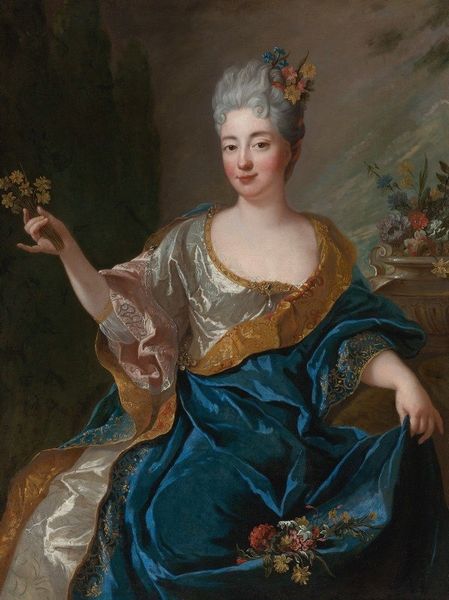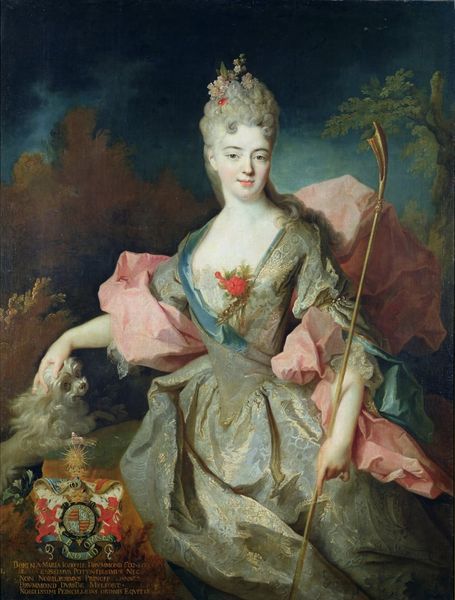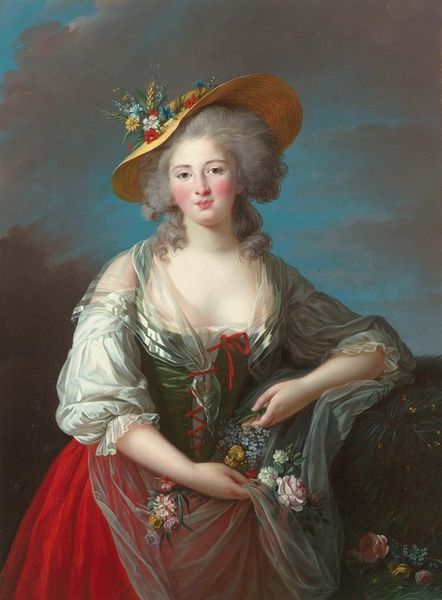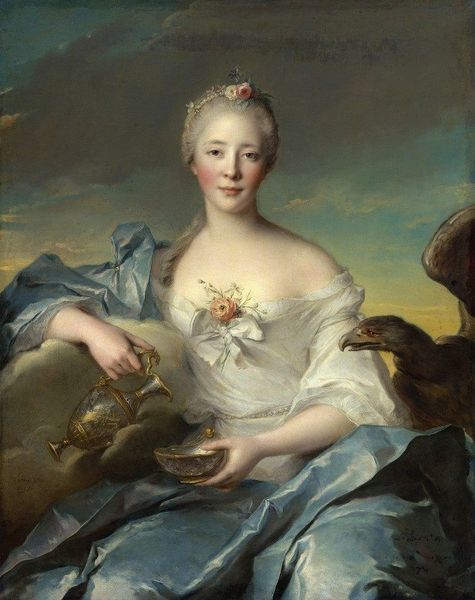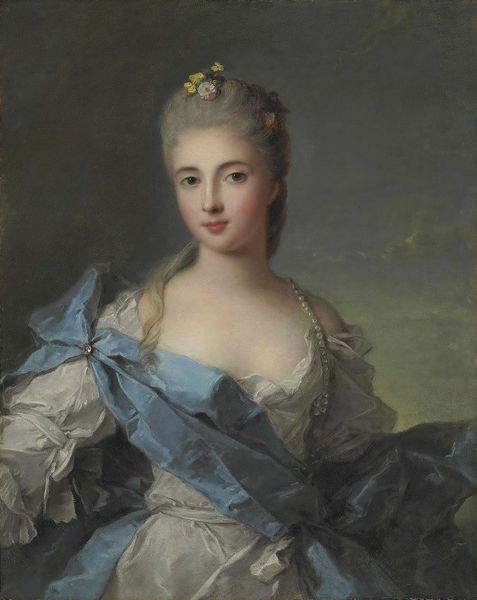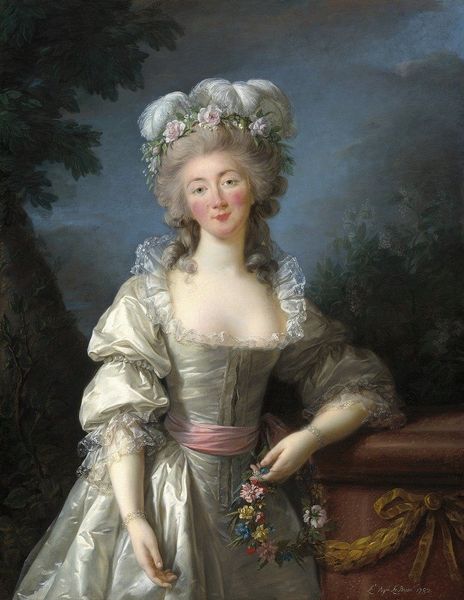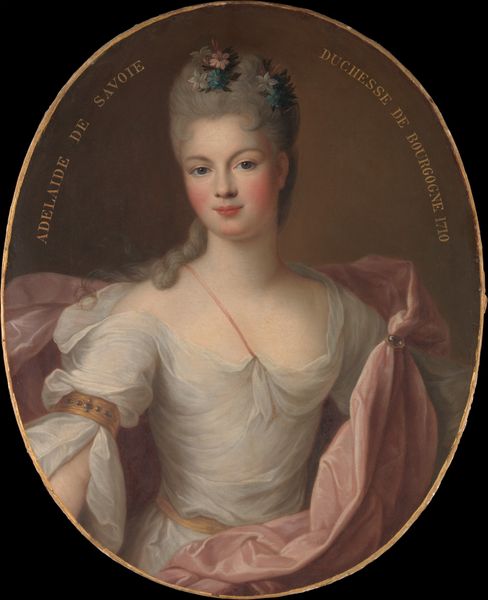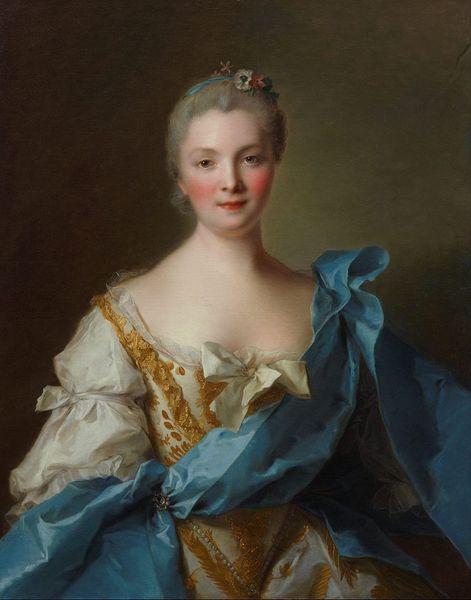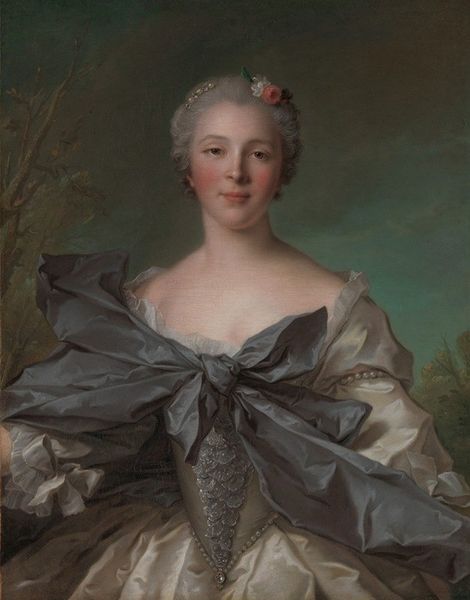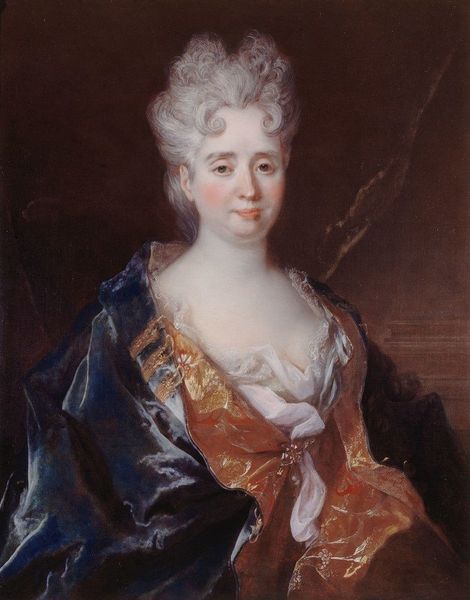
painting, oil-paint
#
portrait
#
baroque
#
painting
#
oil-paint
#
genre-painting
#
history-painting
#
academic-art
#
rococo
Copyright: Public Domain: Artvee
Curator: This painting is a portrait presumed to be of Madame la duchesse de Beaufort, rendered in 1714 by Nicolas de Largillière. What strikes you initially about it? Editor: The immediate impression is one of luminous delicacy. The soft pastels and the graceful, flowing lines lend a serene and refined air. The light seems to almost caress the subject's skin. Curator: Indeed. Largillière was highly sought after by the French aristocracy for his ability to capture not only their likeness but also their social standing. Portraits like these served as crucial markers of identity and status within the complex social landscape of the French court. Editor: Absolutely. The blue velvet draped across her shoulder, for instance, adds a touch of opulence, contrasting beautifully with the gentle textures of her lace and skin. Note also the compositional balance – the positioning of the subject against the landscape creates a harmonious and visually appealing image. Curator: The backdrop, with its suggestion of classical ruins, alludes to the sitter’s refined tastes and education, signaling that she is a woman not merely of beauty, but of intellect as well. This type of portrayal was meant to enhance her reputation. Editor: True, but more fundamentally, the soft focus on the background serves to throw the details of her dress and hair into sharper contrast. There's a sophisticated interplay of textures that speaks to the artist's mastery of his craft. The rococo style really lends itself to highlighting such qualities, wouldn’t you agree? Curator: It does, and within a broader historical context, one could argue Largillière and his contemporaries developed this style to communicate and affirm ideals of power and societal worth at a crucial moment in history. These portraits acted as social documents. Editor: A lovely portrait regardless of history, though! Seeing the contrast and the subtle shifts in tone helps bring a sense of tranquility over the composition. Curator: An excellent example of the portrait's dual role – its inherent aesthetic qualities combined with historical context offers insight. Editor: It is always enlightening to consider art through both perspectives.
Comments
No comments
Be the first to comment and join the conversation on the ultimate creative platform.
